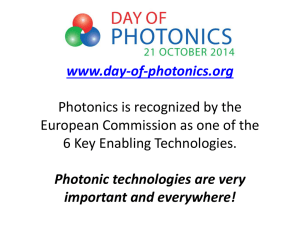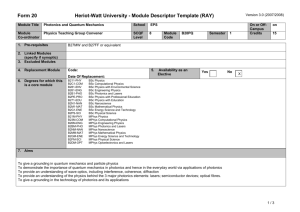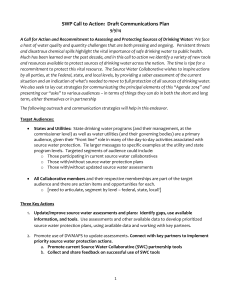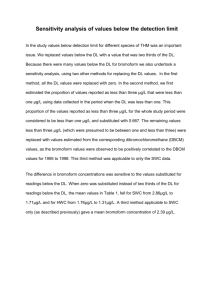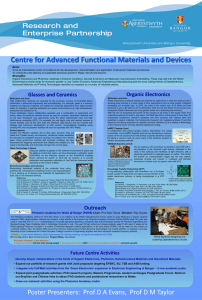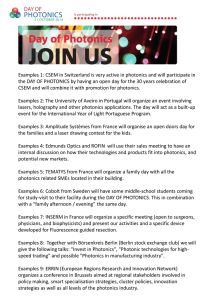photonics, signal processing, cryptography, and software development
advertisement
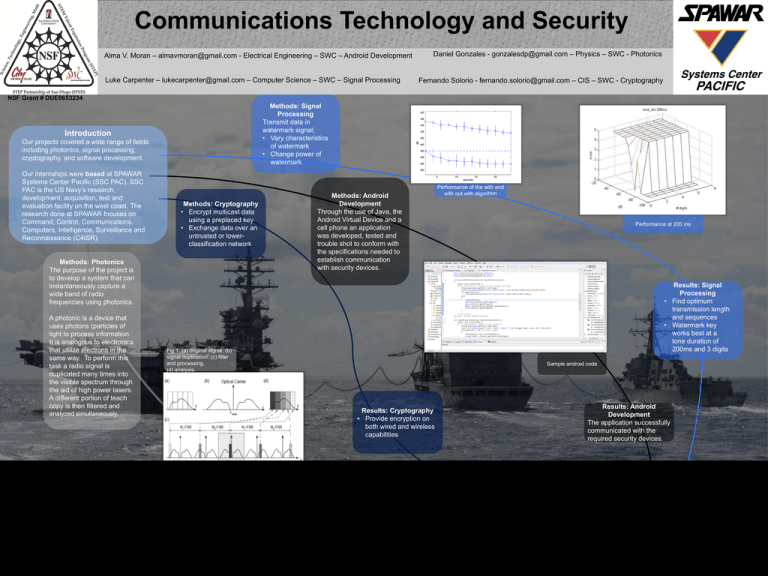
Communications Technology and Security Alma V. Moran – almavmoran@gmail.com - Electrical Engineering – SWC – Android Development Luke Carpenter – lukecarpenter@gmail.com – Computer Science – SWC – Signal Processing Daniel Gonzales - gonzalesdp@gmail.com – Physics – SWC - Photonics Fernando Solorio - fernando.solorio@gmail.com – CIS – SWC - Cryptography NSF Grant # DUE0653234 Methods: Signal Processing Transmit data in watermark signal; • Vary characteristics of watermark • Change power of watermark Introduction Our projects covered a wide range of fields including photonics, signal processing, cryptography, and software development. Our internships were based at SPAWAR Systems Center Pacific (SSC PAC). SSC PAC is the US Navy’s research, development, acquisition, test and evaluation facility on the west coast. The research done at SPAWAR focuses on Command, Control, Communications, Computers, Intelligence, Surveillance and Reconnaissance (C4ISR). Methods: Cryptography • Encrypt multicast data using a preplaced key • Exchange data over an untrusted or lowerclassification network Methods: Photonics The purpose of the project is to develop a system that can instantaneously capture a wide band of radio frequencies using photonics. A photonic is a device that uses photons (particles of light to process information. It is analogous to electronics that utilize electrons in the same way. To perform this task a radio signal is duplicated many times into the visible spectrum through the aid of high power lasers. A different portion of teach copy is then filtered and Methods: Android Development Through the use of Java, the Android Virtual Device and a cell phone an application was developed, tested and trouble shot to conform with the specifications needed to establish communication with security devices. Performance of the with and with out with algorithm Performance at 200 ms Results: Signal Processing • Find optimum transmission length and sequences • Watermark key works best at a tone duration of 200ms and 3 digits Fig 1. (a) original signal, (b) signal duplication, (c) filter and processing, (d) analysis. Sample android code Results: Cryptography • Provide encryption on both wired and wireless capabilities analyzed simultaneously. Acknowledgments Special thanks to Ayax Ramierez, Dr. Raga Bakhiet, Eric Pamintuan. Thank you to our Mentors Steve Nunn, Dr. Sanja Zlatanovic, Jose Romero-Mariona, and Sarah Lauff. We would like to thank SSC PAC, the STEP Partnership of San Diego (SPSD), the Lipp Family Foundation, Southwestern College, the Mathematics Engineering and Science Achievement (MESA) programs, and the Department of Homeland Security. This research internship was funded by the National Science Foundation NSF (DUE 0653234) and the Lipp Family Foundation Results: Android Development The application successfully communicated with the required security devices. Results: Photonics • Produced a “comb” of self seeding pump lasers duplicated from original two pump lasers (Fig. 2) • Assembled filtering device for analyzing duplicated signals "Fig. 2 Frequency comb generated by two boosted pump lasers. The red line indicates that a range of about 100 nm is with the optimal OSNR (Optical Signal to Noise Ratio). This covers over 30 peaks and copies of the original signal. Conclusion This summer our projects worked on creating technologies and devices to improve communications and communications security. These technologies will provide direct support for the Department of Defense, the Department of Homeland Security, and the Warfighter. This opportunity gave us an exciting window into how technical research is conducted in an applications oriented organization.

